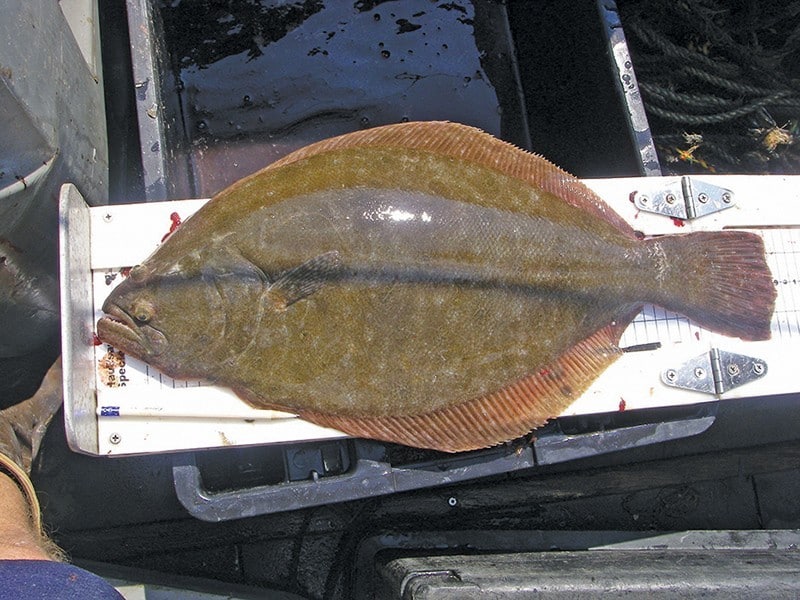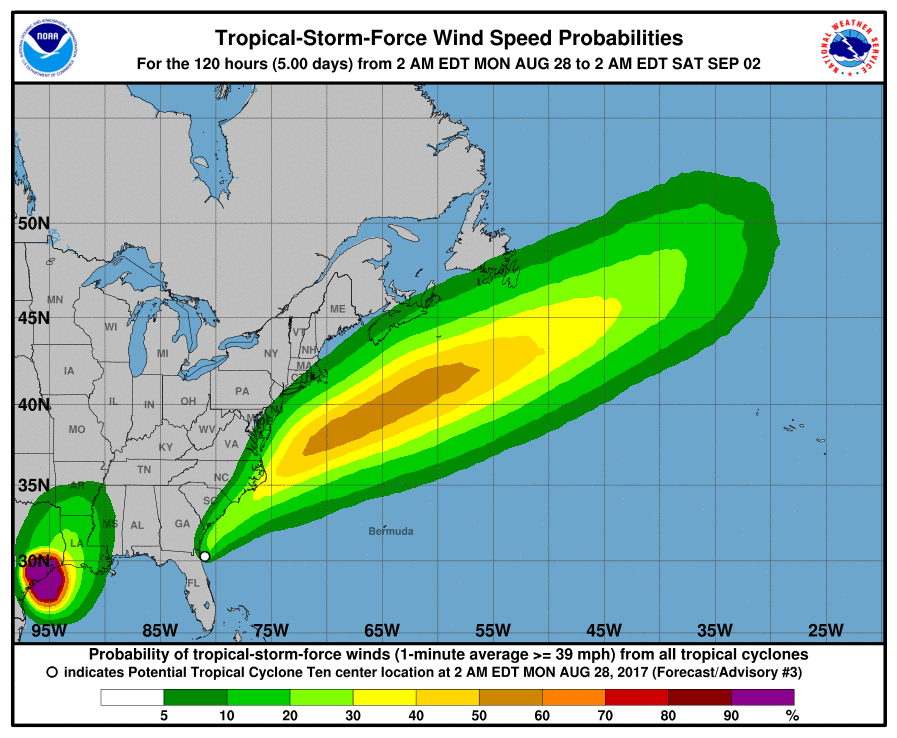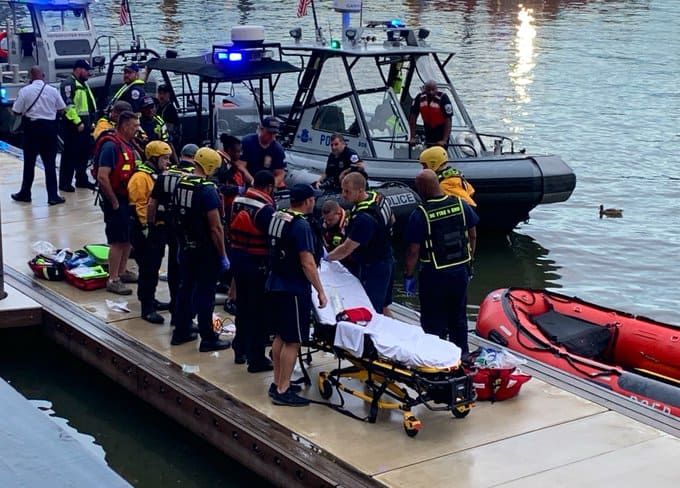Fishery managers and conservationists say a ripple effect from a controversial Trump administration decision to let more “fluke” be caught in New Jersey may impact how important species such as striped bass and menhaden are managed in the Chesapeake.
In the wake of an unprecedented decision by the U.S. Department of Commerce, some in Maryland are already calling on fishery managers to challenge how coast-wide fishing restrictions are implemented in the Bay.
The concern stems from a July ruling by Commerce Secretary Wilbur Ross that allowed New Jersey to reject harvest limits accepted by all other East Coast fishery managers, which were aimed at stemming a seven-year decline in the summer flounder population.
In recent decades, states had appealed similar harvest cutbacks ordered by the Atlantic States Marine Fisheries Commission 22 times. Never before had the commerce secretary overturned a decision by the interstate panel.
The upshot, many worry, is that states will become reluctant to impose politically difficult catch restrictions if they do not believe other states will take similarly protective measures.
“The fear, at the end of the day, is that things start to collapse,” said Martin Gary, executive director of the Potomac River Fisheries Commission and an ASMFC member, “if the ASMFC process is not upheld. Where is all this going to lead to?”
Fishing groups, seeing the New Jersey decision, are likely to apply more pressure to ignore ASMFC dictates. Maryland officials say they are getting such calls regarding unpopular striped bass restrictions imposed two years ago.
“We’re hearing folks talk about it already,” said Mike Luisi, estuarine and marine fisheries manager with the Maryland Department of Natural Resources. “[They are asking] why don’t we just do what New Jersey did? Why don’t we just tell ASMFC, here is what our plan is, and if they say they don’t like it, we’ll just implement it anyway?”
The immediate dispute stems from the ASMFC’s proposals to reduce overfishing on summer flounder or fluke, a popular species caught from North Carolina to New England, whose numbers have been declining since 2000. Last year, the commission cut coast-wide harvests by 30 percent; this year, it proposed slashing them another 41 percent, mainly by increasing the minimum catchable size in most areas.
The restrictions were overwhelmingly approved, but were vigorously opposed by New Jersey, where officials consider the popular fluke a mainstay of its summer recreational fishery. It appealed to the commission, saying it would hurt valuable fisheries. New Jersey officials also contended that increasing the minimum catchable size even an inch would dramatically increase the number of undersize fish tossed back by fishermen.
In fact, the state argued, more fish would ultimately die from being handled and thrown back than would be saved by the new fishing restrictions. It said it could achieve the same conservation results through an educational program to reduce the mortality of fish discarded by anglers.
An ASMFC technical committee of scientists rejected the arguments, saying the state could cite no evidence that its plan would work, nor how the results could be verified. It concluded that New Jersey’s proposal would result in nearly 94,000 additional fish being harvested.
The state took its case to the Commerce Department which, in a July 14 letter, sided with New Jersey, saying it made a “compelling argument.” But the letter, approved by Commerce Secretary Ross, offered no scientific evidence to contradict the ASMFC’s conclusions, nor did it consult with the commission before making its decision.
That left many commission members complaining that the decision was driven by politics rather than science. New Jersey Gov. Chris Christie was an early supporter of Donald Trump’s presidential campaign last year.
“If you can add up Christie, Trump and Ross and not come up with the fact this was a political decision, you’ve got blinders on,” complained Dennis Abbott, a commission member from New Hampshire, at the ASMFC’s August meeting.
The decision also broke with routine, as the National Oceanic and Atmospheric Administration’s Greater Atlantic regional administrator, John Bullard, was never consulted. NOAA is a part of the Commerce Department, but Bullard told the Boston Globe that Ross’ action set “an unfortunate precedent.”
In an emailed statement to the Bay Journal, a department spokesperson said that Ross reviewed information from the state as well as the ASMFC’s technical analysis and concluded that “New Jersey’s management measures could result in a similar level of overall removals — and thus conservation — as desired by the Commission’s plan, while also preserving jobs supported by the recreational summer flounder industry in New Jersey.”
The ASMFC was created 75 years ago to help coordinate the management of fish that migrate through state waters — those within three miles of shore — along the East Coast. It includes fishery managers from each state, as well a representative appointed by each governor and each state legislature.
For decades, its plans had no authority, and were often ignored. That changed in 1984 when, facing a collapse of the striped bass stock, Congress gave the secretary of commerce the power to close fisheries in states that did not comply with the commission’s striped bass management plan. That allowed the ASMFC to adopt — and enforce — severe and unpopular restrictions on striped bass harvests in the late 1980s.
After striped bass recovered, Congress in 1993 extended that enforcement authority to all species managed by the commission. Today, the commission considers 12 of the more than two dozen species it manages to be recovering or sustainable, whereas only six were in that category in 1998.
“This cooperative approach really has worked for a long time,” said Chris Moore, a fisheries scientist with the Chesapeake Bay Foundation. “But now we not only have a case of a state going out of compliance, [and] we have the Department of Commerce not backing up the ASMFC and its longstanding traditions of doing a good job managing fisheries. . . . What is going to be the next state, and the next species to go out on their own? That is what is really concerning at this point.”
The lack of any technical basis for Commerce’s decision further compounds the problem, commission members say, because it appears no scientific standard is needed to overturn an action.
“If it is enough that a state makes a ‘compelling argument’ for exemption from a plan, and if avowedly untried and unverifiable conservation claims can suffice, deliberations over fishery management will turn away from facts and toward pure advocacy,” Douglas Grout, ASMFC chair and New Hampshire fisheries chief, wrote in a letter asking Ross to explain the scientific basis for his decision. “It will make it all the more difficult for member states to reach agreement on measures that are actually necessary to conserve interstate fishery resources, but which are unpopular with in-state constituents.”
“We have a very similar situation in the Chesapeake Bay with striped bass that New Jersey did with flounder,” said DNR’s Mike Luisi. “Our fishermen have to catch a lot of fish before they can get their limit of two [measuring at least 20 inches].” He noted that Maryland had sided with other states in finding New Jersey in noncompliance for not adopting the ASMFC catch restrictions on summer flounder and expressed concern that if its actions do not meet conservation goals, “we will all have to pay the consequences” with further restrictions.
At the same time, he said, the commission may need to be more open about considering alternative management plans presented by states in the future. In Maryland, he said, the conservation benefit of setting the 20-inch size limit for striped bass is likely mini mal, because large numbers of undersize fish undoubtedly die when tossed back in the water, especially during hot summer months when striped bass are already stressed.
Next year, Luisi said, Maryland is likely to propose reducing the size limit for striped bass, at least during the hottest months, though he acknowledged that documenting the benefit with scientific certainty would be difficult.
“It is a new chapter,” Luisi said of the implication of the Commerce decision. “Managers are going to maybe give some more consideration to things that maybe make sense but we can’t necessarily back up with hard science. But that will be challenging.”
-Karl Blankenship, Bay Journal News Service



